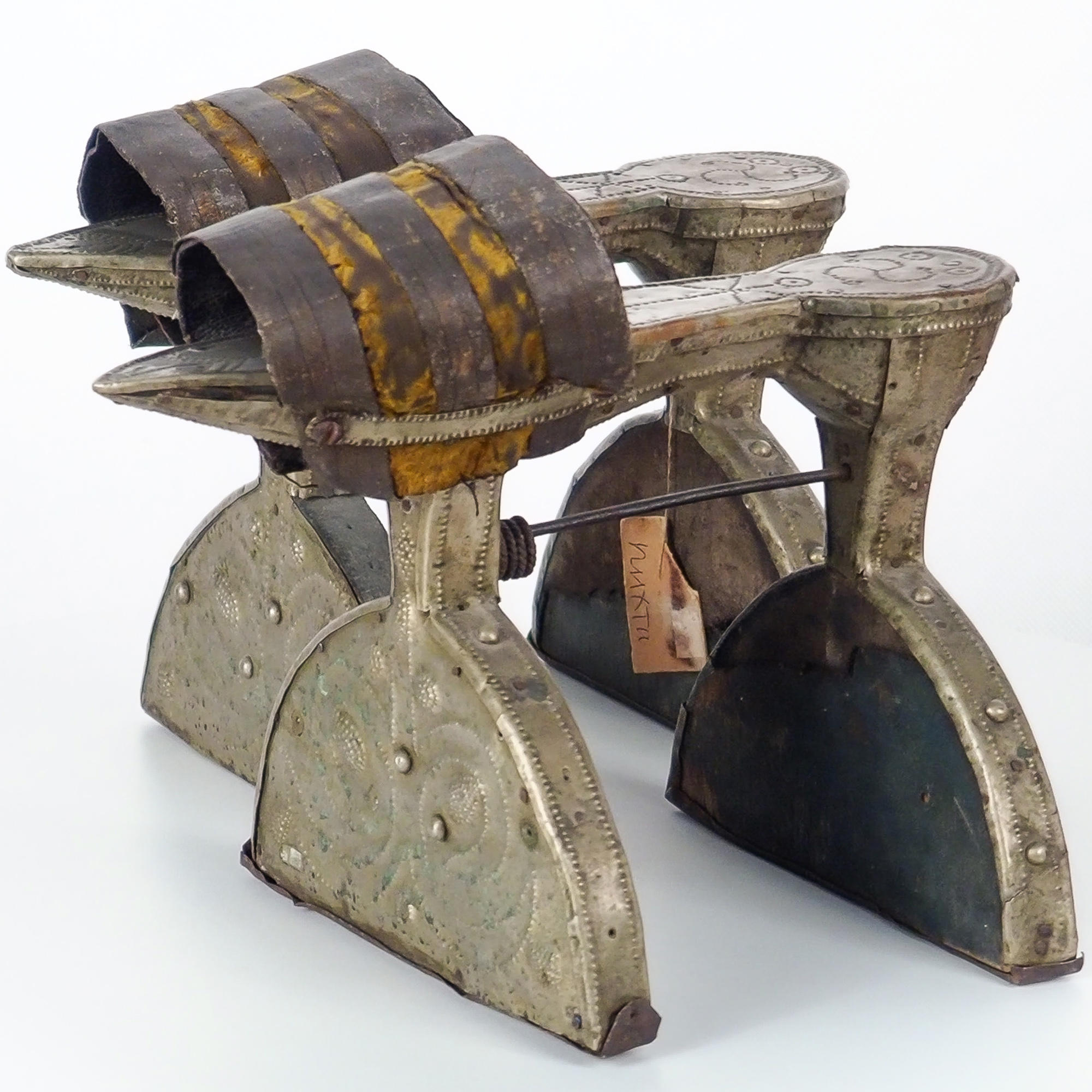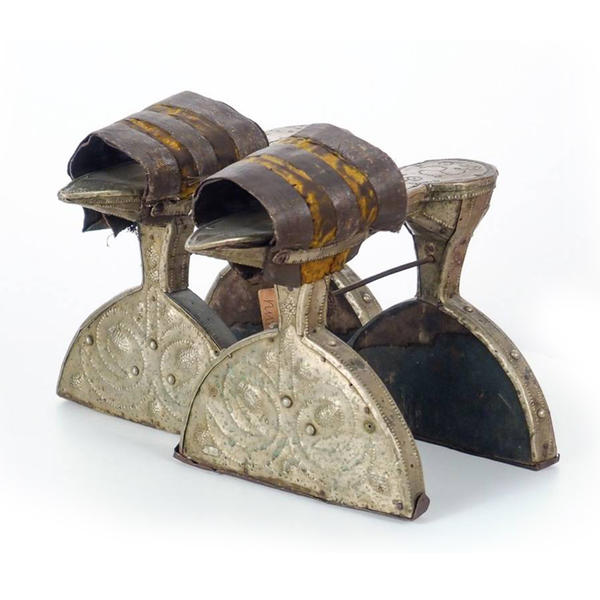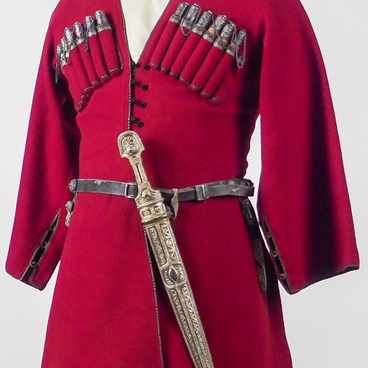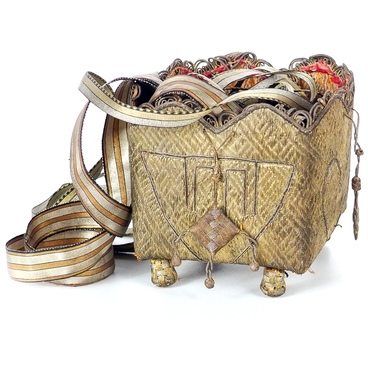Cothurni is the oldest type of women’s shoes that the Adyghes continued to wear in the 19th century. Such was the name for open shoes with high props. In the Adyghe language, the cothurni were called “pkhetsuake”. This word can be translated into Russian as “wooden shoes”.
Cothurni
Creation period
late 19th century
Technique
wood, metal, carving, turning, chasing
Exhibition
18
Open in app#1
Cothurni
#4
#2
Usually women wore such stilts only on for feasts, for example, weddings. In these shoes it was possible to move only in small smooth steps – exactly such a gait was considered by the Adyghes to be the most graceful and feminine.
#5
Cothurni were not worn on bare feet: they were worn over soft leather slippers. If a woman was going to dance, then she went to the dance floor in cothurni, where she removed them and remained in slippers – and after the dance she again put on the stilts.
#7
The process of making cothurni was quite complicated and time-consuming. First, the master carved a base from wood in the shape of a female foot, but with a pointed toe. Then it was strengthened on two props of the same size. One was placed under the toe, the second under the heel. Their height could reach from 11 to 19 centimetres. And to make the shoes more stable, the props were made semi-circular, expanding downward. On top they sewed a wide loop of leather and a galloon ribbon to the base of the cothurni.
#8
The finished cothurni were covered with velvet or leather. Noble and wealthy Adyghe women decorated them with silver engraving, niello or gilding. Simpler shoes were decorated with metal, most often tin, onlays with a punched pattern.
#9
The ethnographer Evgenia Studenetskaya wrote:
’… the incrustation of such (but often even higher) cothurni with bone and mother-of-pearl is especially characteristic of Crimean Tatars. In some cases, metal clinking pendants were attached under the sole of the shoes’.
#11
In the Middle Ages, the Adyghes maintained political and commercial ties with the Crimean Khanate. Researchers believe that it was from there that the cothurni got to Circassia. In addition, Adyghe and Crimean noble families were connected by the custom of atalik (from the Turkic word “atalyk” – “fatherhood”). According to this tradition, Tatars often sent their children into care of Circassian princes.
read morehide
00:00
00:00
1x
Cothurni
Creation period
late 19th century
Technique
wood, metal, carving, turning, chasing
Exhibition
18
Open in app
Share



